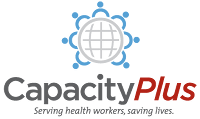Reproductive Health
Soccer and Sexual Health Education: A Promising Approach for Reducing Adolescent Births in Haiti
This paper explores the effect of an innovative, integrative program in female sexual reproductive health (SRH) and soccer (or fútbol, in Haitian Creole) in rural Haiti by measuring the rate of births among program participants 15–19 years old and their nonparticipant peers. [from abstract]
- 717 reads
Understanding Sexual and Reproductive Health Needs of Adolescents: Evidence from a Formative Evaluation in Wakiso District, Uganda
Recent studies done in central Uganda have shown that there is need for a critical assessment of adolescent friendly services (AFS) to gain insights on current practice and inform future interventions. This study aimed to assess the sexual reproductive health needs of the adolescents and explored their attitudes towards current services available. [from abstract]
- 665 reads
External evaluation of the Amref Health Africa Project on Sexual Reproductive Health Rights for the Young People (Tuitetee – Lets Fight For It), 2010- 2015
This end-of-project evaluation of the Swedish support to the Amref Health Africa Project on Sexual Reproductive Health Rights for the Young People (Tuitetee–LetsFight For It), 2010-2015 was commissioned by the Embassy of Sweden in Tanzania, through Sida’s framework agreement for reviews and evaluations. [from preface]
- 487 reads
The Use of ICT Tools (Mobile Phones) to Improve Awareness of Pregnancy Danger Signs among Pregnant Women in Rural Communities of South Africa
he present study investigated awareness of pregnancy danger signs, symptoms and associated factors among a group of South African pregnant women attending prenatal care clinics in rural setting. [from abstract]
- 810 reads
Standard Days Method of Contraception: Evidence on Use, Implementation, and Scale Up
This working paper summarizes the results of a structured review on SDM [Standard Days Method] by the Evidence Project in 2014. This review utilized standardized search strings and systematic screening and abstracting criteria for reviewing available peer-reviewed and grey literature reports on SDM outcomes.
- 553 reads
Health Care Providers’ Perceptions of and Attitudes Towards Induced Abortions in Sub-Saharan Africa and Southeast Asia: A Systematic Literature Review of Qualitative and Quantitative Data
The aim of this study was to identify, summarise and synthesise available research addressing health care providers’ perceptions of and attitudes towards induced abortions in sub-Saharan Africa and Southeast Asia. [from abstract]
- 751 reads
Evaluations of Reproductive Health Programs in Humanitarian Settings: A Systematic Review
Provision of reproductive health (RH) services is a minimum standard of health care in humanitarian settings; however access to these services is often limited. This systematic review, one component of a global evaluation of RH in humanitarian settings, sought to explore the evidence regarding RH services provided in humanitarian settings and to determine if programs are being evaluated. [from abstract]
- 515 reads
Assessing Post-Abortion Care in Health Facilities in Afghanistan: A Cross-Sectional Study
Complications of abortion are one of the leading causes of maternal mortality worldwide, along with hemorrhage, sepsis, and hypertensive diseases of pregnancy. In Afghanistan little data exist on the capacity of the health system to provide post-abortion care (PAC). This paper presents findings from a national emergency obstetric and neonatal care needs assessment related to PAC, with the aim of providing insight into the current situation and recommendations for improvement of PAC services. [from abstract]
- 653 reads
Perceptions and Barriers to Contraceptive Use among Adolescents Aged 15 - 19 Years in Kenya: A Case Study of Nairobi
Even after the launch of family planning program in Kenya, in 1967, contraceptive use among adolescents has remained below 10 percent while child bearing has increased from 2 percent at age 15 to 36 percent at age 19. To understand the roles of perceptions and barriers on contraceptive use, a mixed method study design was applied to a conceptual framework that operationalized these concepts using data from different sources of social interactions in Nairobi, Kenya. [from abstract]
- 839 reads
Adding It Up 2014: The Costs and Benefits of Investing in Sexual and Reproductive Health
The 2014 edition of Adding It Up expands the scope of the report and provides new estimates of the needs for and costs and benefits of sexual and reproductive health interventions in the following key areas: contraceptive services; maternal, newborn and other pregnancy-related care; selected services related to HIV prevention; and treating women for four other common STIs. [from introduction]
- 706 reads
Health Workers' Experiences, Barriers, Preferences and Motivating Factors in Using mHealth Forms in Ethiopia
Mobile health (mHealth) applications, such as innovative electronic forms on smartphones, could potentially improve the performance of health care workers and health systems in developing countries. However, contextual evidence on health workers’ barriers and motivating factors that may influence large-scale implementation of such interfaces for health care delivery is scarce. [from abstract]
- 764 reads
Young Women’s Access to and Use of Contraceptives: The Role of Providers’ Restrictions in Urban Senegal
Contraceptive prevalence is very low in Senegal, particularly among young women. Greater knowledge is needed about the barriers young women face to using contraceptives, including barriers imposed by health providers. [from abstract]
- 578 reads
Barriers and Motivators to Early Utilization of Ante Natal Care Services in Chipinge South District in Zimbabwe: A Qualitative Study
Zimbabwe is ranked amongst the countries with highest maternal mortality rate in the world. Lack of early Ante
Natal Care (ANC) use and home deliveries by pregnant women are amongst the drivers of maternal mortality in the
country. The study therefore delved on identifying barriers and motivators to early use of ANC and delivering at health
facilities in Chipinge South District [from abstract]
- 509 reads
A Regional Experience on Providing Comprehensive Sexual and Reproductive Health for Most-at-Risk Adolescents and Young People
The article aims to evaluate the current state of sexual and reproductive health policy regarding sexual and
reproductive health service and reproductive rights for most at risk adolescent/youth. The training of trainers and
local trainings present the nature of major challenges in service provision and the quality of services in the light of
findings from international trainings conducted in Turkey and Tajikistan. [from abstract]
- 606 reads
Sexual and Reproductive Health: Progress and Outstanding Needs
We examine progress towards the 1994 International Conference on Population and Development (ICPD) commitment to provide universal access to sexual and reproductive health (SRH) services by 2014, with an emphasis on changes for those living in poor and emerging economies. [from abstract]
- 444 reads
Health Systems Integration of Sexual and Reproductive Health and HIV Services in Sub-Saharan Africa: A Scoping Study
Both sexual and reproductive health (SRH) services and HIV programs in sub-Saharan Africa are typically delivered vertically, operating parallel to national health systems. The objective of this study was to map the evidence on national and international strategies for integration of SRH and HIV services in sub-Saharan Africa and to develop a research agenda for future health systems integration. [from abstract]
- 594 reads
Traditional Birth Attendance (TBA) in a Health System: What Are The Roles, Benefits and Challenges: A Case Study of Incorporated TBA in Timor-Leste
The study utilized a non-systematic review of the literature using key words such as community health
workers, traditional birth attendants, reproductive health, child health and health outcomes. A case study from
Timor-Leste was also used. [from abstract]
- 991 reads
Population, Family Planning and Reproductive Health Policy Harmonization in Bangladesh
Over the past 30 years, Bangladesh has achieved significant economic and human development progress, and demonstrated impressive policy as well as programmatic commitment to lowering the fertility level. However, its future socioeconomic prospects may be hampered by its population growth rate, depending on how quickly the fertility rates decline and at which point they stabilize. [from abstract]
- 480 reads
Early Infant Feeding Practices in Three African Countries: The PROMISE-EBF Trial Promoting Exclusive Breastfeeding By Peer Counsellors
Immediate and exclusive initiation of breastfeeding after delivery have been associated with better neonatal survival and child health and are recommended by the WHO. We report impact on early infant feeding practices from the PROMISE-EBF trial. [from abstract]
- 533 reads
Checkpoints for Choice: An Orientation and Resource Package
Checkpoints for Choice: An Orientation and Resource Package offers practical guidance on how to enable stakeholders involved in FP programs to examine issues of full, free, and informed choice and to keep the needs and preferences of clients central to their operations. The package consists of a detailed plan with all support materials for a one-day workshop to enable FP program planners and managers to strengthen the focus of FP programs on clients’ human rights and contraceptive choices in the context of a rights-based program. [from resource]
- 565 reads
Population and Sustainable Development in the Post-2015 Agenda
The Outcome Report of the Global Consultation on Population Dynamics and the Post-2015 Development Agenda not only explains the linkages between today’s most pressing development challenges, population dynamics and sexual and reproductive health and rights, but also provides concrete recommendations on how to address these linkages in the post-2015 development agenda. To date, this report makes the clearest and strongest case for why population matters for the post-2015 development agenda and for why the ICPD Programme of Action must be firmly integrated into this new agenda. [from abstract]
- 436 reads
Meeting The Need For Modern Contraception: Effective Solutions to a Pressing Global Challenge
Voluntary family planning is one of the most efficacious and cost-effective means of improving individual health,
gender equity, family well-being, and national development. Increasing contraceptive use and reducing unmet
need for family planning are central to improving maternal health (UN Millennium Development Goal 5).
- 401 reads
Contraceptive Implants: Providing Better Choice to Meet Growing Family Planning Demand
Contraceptive implants are extremely effective, long acting, and suitable for nearly all women—to delay, space, or limit pregnancies—and they are increasingly popular. Now, markedly reduced prices and innovative service delivery models using dedicated non-physician service providers offer a historic opportunity to help satisfy women’s growing need for family planning. [from abstract]
- 302 reads
Reducing Unmet Need by Supporting Women With Met Need
High contraceptive discontinuation in the past has contributed tens of millions of cases of unmet need, and discontinuation among current users will contribute even more cases in the future. Enabling past users with unmet need to resume use and encouraging current users to continue use of the same or another method could be an effective strategy to reduce future unmet need. [from abstract]
- 355 reads
International Human Rights Bodies on Unwanted Pregnancy and Abortion - Part 2
This publication, which contains four different parts and was updated in June 2014, presents human rights agreements, treaties and policies that address maternal mortality, unwanted pregnancy and abortion as they relate to global reproductive rights work. Part 2: Statements from regional treaties, human rights commissions, Special Rapporteurs, and other intergovernmental bodies.
- 518 reads
International Human Rights Bodies on Unwanted Pregnancy and Abortion - Part 1
This publication, which contains four different parts and was updated in June 2014, presents human rights agreements, treaties and policies that address maternal mortality, unwanted pregnancy and abortion as they relate to global reproductive rights work. Part 1: Statements under UN human rights treaties and from treaty monitoring committees, Special Rapporteurs, regional human rights courts and commissions.
- 511 reads
International Human Rights Bodies on Unwanted Pregnancy and Abortion - Part 3
This publication, which contains four different parts and was updated in June 2014, presents human rights agreements, treaties and policies that address maternal mortality, unwanted pregnancy and abortion as they relate to global reproductive rights work. Part 3: Country-Specific Treaty Monitoring Committee Concluding Observations, Universal Periodic Review Working Group recommendations, and recommendations by Special Rapporteurs, commissions, and courtsCountries A-L.
- 436 reads
Role-Players in Abortion Decision-Making in the Accra Metropolis, Ghana
Making the final decision to terminate a pregnancy can be influenced by different circumstances involving various individuals. This paper describes the key players involved in the decision-making process regarding abortions among women who elected to undergo an induced abortion in a cosmopolitan urban setting in Ghana. [from abstract]
- 552 reads
The Role of Health Systems and Policy in Producing Behavior and Social Change to Enhance Child Survival and Development in Low- and Middle-Income Countries: An Examination of the Evidence
Evidence-based behavior change interventions addressing health systems must be identified and disseminated to improve child health outcomes. Studies of the efficacy of such interventions were identified from systematic searches of the published literature. Two hundred twenty-nine of the initially identified references were judged to be relevant and were further reviewed for the quality and strength of the evidence.
- 461 reads
Family Planning Logistics Toolkit
n family planning programs, logistics refers to the selection, financing, delivery, and distribution of contraceptives and related supplies. Successful logistics management means delivering the right product, in the right quantity, in the right condition, to the right place, at the right time, for the right cost.
- 570 reads




